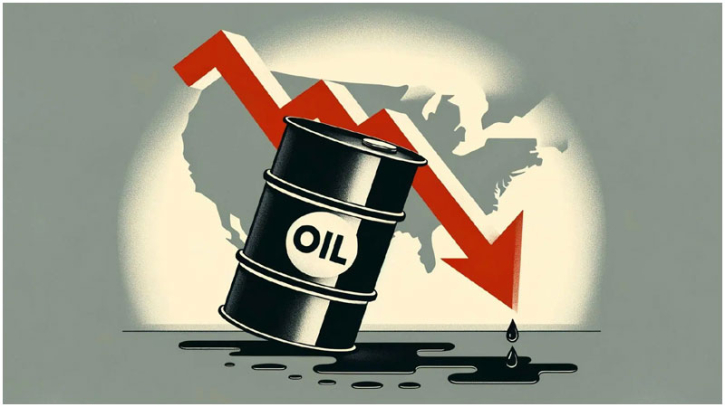Oil prices sink deeper as Trump calls Putin and Zelensky

The oil price fell further on Wednesday after U.S. President Donald Trump took the first big step towards ending Ukraine war three weeks after his inauguration.
In Asian trading on Thursday, Brent crude for April delivery sank nearly a percentage point to trade at $74.48 per barrel at 00.53 ET, while WTI crude for March delivery declined the same to $70.70 per barrel.
On social media, Trump said he and Putin "agreed to have our respective teams start negotiations immediately, and we will begin by calling President Zelenskiy, of Ukraine, to inform him of the conversation, something which I will be doing right now."
A ceasefire to the Russia-Ukraine war could be bearish for oil prices if Trump pushes for removal of sanctions on the Russian energy industry, Tyler Richey, co-editor at Sevens Report Research, told MarketWatch. Geopolitical stability may also "largely extinguish the still simmering 'fear bid' in the oil market."
The latest sanctions by the Biden administration roughly tripled the number of directly sanctioned Russian crude oil tankers, enough to affect around 900,000 barrels per day (bpd). Whereas it’s highly likely that Russia will try to circumvent the sanctions by employing even more shadow fleet tankers and ship-to-ship transfers, StanChart sees 500,000 bpd of displacements over the next six months.
However, the oil price selloff kicked off before Trump’s latest mediation efforts in the Ukraine war thanks to rising U.S. crude stockpiles and hawkish remarks from Fed Chair Jerome Powell. Jerome Powell said on Tuesday that the Fed is not rushing to cut interest rates further because the economy is in a good place, but it is prepared to do so if inflation drops or the job market weakens.
Higher interest rates increase the cost of borrowing, which can slow economic activity and weaken oil demand. The U.S. consumer price index (CPI) increased at a faster-than-expected clip in January, reinforcing the Federal Reserve's wait-and-see stance before cutting interest rates further amid growing uncertainty over the economy.
The CPI jumped 0.5% last month, up from 0.4% in December, and advanced 3.0% in the 12 months through January after advancing 2.9% in December.
.png)




